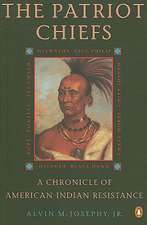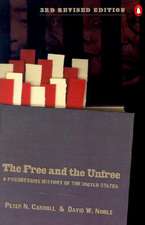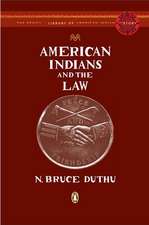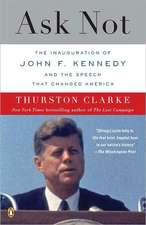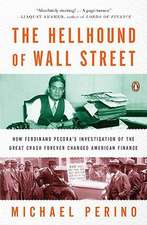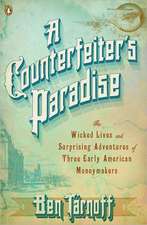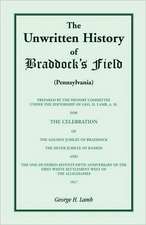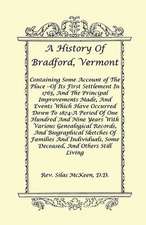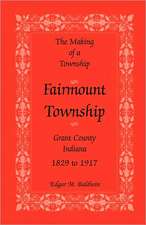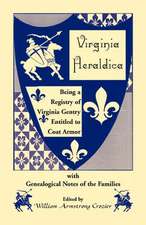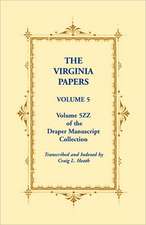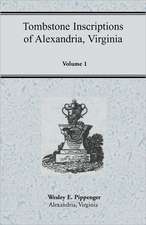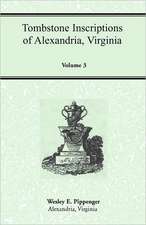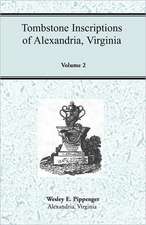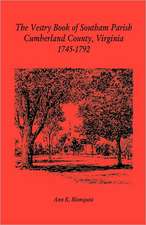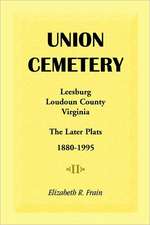A Dangerous Place: California's Unsettling Fate
Autor Marc Reisneren Limba Engleză Paperback – 30 iun 2004 – vârsta de la 18 ani
Writing with a signature command of his subject and with compelling resonance, Marc Reisner leads us through California’s improbable rise from a largely desert land to the most populated state in the nation, fueled by an economic engine more productive than all of Africa. Reisner believes that the success of this last great desert civilization hinges on California’s denial of its own inescapable fate: Both the Los Angeles and San Francisco Bay areas sit astride two of the most violently seismic zones on the planet. The earthquakes that have already rocked California were, according to Reisner, a mere prologue to a future cataclysm that will result in immense destruction. Concluding with a hypothetical but chillingly realistic description of what such a disaster would look like, A Dangerous Place mixes science, history, and cultural commentary in a haunting work of profound importance.
Preț: 129.08 lei
Nou
Puncte Express: 194
Preț estimativ în valută:
24.70€ • 25.86$ • 20.44£
24.70€ • 25.86$ • 20.44£
Carte disponibilă
Livrare economică 18 martie-01 aprilie
Preluare comenzi: 021 569.72.76
Specificații
ISBN-13: 9780142003831
ISBN-10: 0142003832
Pagini: 208
Ilustrații: 8-page b/w photo insert
Dimensiuni: 162 x 191 x 13 mm
Greutate: 0.17 kg
Editura: Penguin Books
ISBN-10: 0142003832
Pagini: 208
Ilustrații: 8-page b/w photo insert
Dimensiuni: 162 x 191 x 13 mm
Greutate: 0.17 kg
Editura: Penguin Books
Recenzii
"Reisner manages the nearly impossible feat of explaining geopolitical history, hydro-engineering, plate tectonics and comparative seismology in an engaging, delightfully literate fashion. This important book will appeal to many, including those outside the Golden State. Environmentalists will naturally go for it, but Reisner's witty, concise prose will attract general readers, too." —Publishers Weekly
"This posthumous work by the author of the award-winning Cadillac Desert is a fitting tribute to his environmental concerns and the power of his writing." —Library Journal
"Nothing Stephen King has ever written is nearly as frightening." —The San Diego Union-Tribune
"This posthumous work by the author of the award-winning Cadillac Desert is a fitting tribute to his environmental concerns and the power of his writing." —Library Journal
"Nothing Stephen King has ever written is nearly as frightening." —The San Diego Union-Tribune
Notă biografică
Marc Reisner worked for many years at the Natural Resources Defense Council. His Cadillac Desert was a National Book Critics Circle Award nominee. He died in 2000.
Extras
The most striking thing about modern California is not that it has transformed itself, in two long human lifespans, from a seamless wilderness into the most populous and urban of the fifty American states. Nor is it that one in two people living west of the hundredth meridian--which is to say, in half the landmass of the United States--now resides in California. Nor is it even that so many people are pouring in from everywhere that California is about to become the first state without a white--at least Caucasian--majority. All that is peripheral to the most fateful upshot of this state's century and a half of frantic growth: most of its inhabitants have settled, and will continue to settle, where they shouldn't have.
A swarm of Californians outnumbering the population of Texas has crammed into two small spaces: the Los Angeles Basin and the San Francisco Bay Area. These two regions, each roughly the size of the tiniest eastern states, now rank second and fourth among the nation's metropolitan areas. In an American West distinguished by its emptiness, they are gargantuan anomalies. Greater Los Angeles alone has more inhabitants than the ten other western states combined--states that have booming metropolises (Salt Lake City, Las Vegas, Seattle, Phoenix, Portland) of their own. It is the only conurbation in the West that makes the Bay Area, now nearly as populous as New York City, seem bucolic.
The appearance of such urban phantasms is mainly a twentieth-century phenomenon. In 1850, the world's largest city was London, with a population of two and a half million. Today, cities of five million people don't rate a second thought; there are some that hardly anyonehas heard of, such as Tianjin, China. Greater Tokyo and Mexico City are both about as populous as Canada, but no one seems willing to say that their growth must stop--that they have grown impossibly, unmanageably huge. That is because, somehow, such chaotic, crawling hives have managed to cheat breakdown and catastrophe; at least they have so far.
California's two great megalopolises have done better. Despite the disappearance of almost two hundred thousand defense-related jobs, despite racial polarization and a creepily pervasive criminal violence, despite the departure, in the mid-1990s, of both its National Football League teams, Los Angeles remains one of the three wealthiest urban economies in the world--the regional economic product surpasses Africa's--and a magnet for tens of thousands of new emigrants each year. The Bay Area grows just as inexorably, if less famously. In the last twenty years of the twentieth century, its population soared from three million to six and a half million people; we're now twice as populous as Oregon, having absorbed, in the past twenty years, a population equal to that of Oregon.
Both Los Angeles and the Bay Area are the durable demographic wonders of American history: they exploded into existence, each at different times, and raced away from there. But does it make sense for so many people to inhabit them? From one perspective, nature's, the answer is a deafening no. In the first place, neither region has any water. There is some, but the local resources--some aquifers and seasonal streams--are enough to sustain hundreds of thousands in the long run, not many millions. Unlike Cairo--another huge desert anthill, but one that sits beside the Nile--Los Angeles and the Bay Area have had to import water over seemingly impossible distances and across rugged, desolate terrain. Los Angeles' aqueducts, viewed through telescopes from space, have given astronauts pause. If the contrived flow of water should somehow just stop, California's economy, which was worth about a trillion dollars as the new millennium dawned, would implode like a neutron star.
Building impressive waterworks to sustain humans in drought-prone places is not exactly new. Babylon and Mesopotamia and Ur did it, and so, even more impressively, did Rome. In fact, the majority of great civilizations in antiquity were in arid or semi-arid regions, and water, in one way or another, is linked to the demise of most. But an abject reliance on imported water isn't the Bay Area's, or the South Coast's, main vulnerability; it's the fact that they are astride one of the most violently active seismic zones in the world. The real estate and public infrastructure on top of California's major fault zones is valued in trillions of dollars--not billions. The economic loss from the next great earthquake (the last occured in San Francisco in 1906 and in the Los Angeles area in 1857) might surpass the ten most expensive disasters in the United States history--might surpass all of them combined. Death and suffering, breakdown and paralysis, will be like nothing we've ever seen.
The damage from such a quake could, of course, be that much more severe if it occurs near the end of the seasonal drought that California endures each year--when it hasn't rained in months. (ln 1923, the Great Kanto earthquake, whose epicenter was in Tokyo Bay, killed a hundred and forty thousand people and set off firestorms that incinerated much of Tokyo and Yokohama. In Japan there is year-round precipitation.) The odds are respectable that Los Angeles or the Bay Area will be struck during California's long seasonal drought, when the whole surrounding landscape is primed to burn. The water supply systems will be damaged, perhaps even drained; when that happens, after fires are ignited--as they will be--a lot of what has survived the ground shaking will burn.
So California snubs nature--what else is new? Since humans progressed from hunting and gathering, most human activity has become in some sense unnatural. A dam mocks the natural order; so does a cornfield; so does antibiotic intervention against disease. But among civilizations that have overextended themselves, California, rather than settle its human hordes where its water is and earthquake zones aren't, has done the opposite.
Carey McWilliams, perhaps the sharpest critic of his native state that California has produced, wrote a book called California: The Great Exception--an alien nation inside the American fold. California's exceptionalness began before it was an American state; its whole demographic history went against the continental grain. In most eastern and midwestern states, rates of growth went rapidly forward, peaked during the industrial revolution, then tapered off. Even other western states, with climates and landscapes more inhospitable than California's, grew quite rapidly from the moment they were settled by Europeans. In California, the Spanish made landfall nearly a century before the English landed at Plymouth Rock, but two hundred years later the whole population (excluding Indians) could have fit inside a concert hall. That was the first iconoclastic chapter in the state's demographic history--an extraordinary period of almost no growth. Then, as the growth of other states began to slow dramatically, California's took off with no brakes.
It began in 1769, with the arrival of Junipero Serra, a Majorcan priest in the Franciscan order. Serra, who has been morphed into a kindly old monk, was, like most of the friars, a man of remarkable toughness and comprehensive skills. He was also a self-righteous autocrat with a brutal temper and a penchant for self-flagellation--in the event of an erotic dream, he had at hand a nail-studded board hanging by his bed. Serra was adventuresome, easily bored, and intrigued by the country lying north of Mexico, which was unsettled mainly because explorers had not found any gold. When he was fifty-five years old, with a tepid blessing from the colonial government, Serra took a tiny party a thousand miles north, traveling on foot with pack horses, and, at a mission site near San Diego Bay, introduced California's first non-native culture: a despotic theocracy. Serra and the train of disciples that followed him for fifty years managed to found twenty-three missions, from San Diego north to the Sonoma Valley. And yet, despite all kinds of blandishments--land grants, cash subsidies, Indian slaves--the settlements that grew up around the missions had attracted just four thousand colonists by the time Mexico won independence from Spain in 1823.
The new Mexican government viewed the missions as an expensive liability, and, in the 1830s, ordered them secularized. The iron-willed priests had held these communities together; when they were gone, many Indians who had been lured into servitude ran off. Without their slave labor, the irrigation works that sustained the missions went slowly to ruin, and settlers who stayed generally turned to ranching. Some of the missions became ghost settlements, like the later mining towns. Those that held on to a few hundred settlers were at or near the coast, especially where the colonial regime maintained defensive presidios.
In the late 1830s and early 1840s, the majority of California's few thousand non-native inhabitants resided in three such places. Two of them--San Francisco, which was then called Yerba Buena ("good herb"), and Monterey--held obvious advantages as ports. The third was the most curiously situated. Two of Serra's advance men, Gaspar de Portola and Father Juan Crespi, first reconnoitered there in 1771, but kept going and founded the next mission some miles farther north. Five years later, however, Felipe de Neve, the governor of both Californias, Alta and Baja, decided to establish a pueblo there anyway. Perhaps to make up for the shortcomings that induced the priests to move on, de Neve bestowed on the threadbare locale a grandiloquent name: El Pueblo de Nuestra Senora la Reina de los Angeles del Rio de Porciuncula.
The Town of Our Lady the Queen of the Angels by the River of a Little Portion of...what? The pueblo was situated twenty miles from the coast, a long way by horse or foot. No decent harbor existed there, as at San Diego, Monterey, and especially San Francisco. The settlement was lost in a flat semi-arid plain, punctuated by some hills, that stretched forty or fifty miles inland before it collided dramatically--drastically--with a half-circle of high ranges that the priests named after various saints: Gabriel, Bernard, Jacinto, Ana. The highest of the summits, San Gorgonio Peak, is three hundred feet taller than Oregon's Mount Hood. The stark magnificence of these raw young mountains was a scenic attraction, to the degree that the friars were interested in scenery--reading their journals, one thinks they didn't give a damn--but the terrain made Los Angeles hard to reach. By land, you had to cross forbidding passes or coastal canyons thick with chaparral. In winter, arriving by ship, you risked wild Pacific storms. The mountains ringing the basin blocked the eastward movement of these same storms and wrung out their moisture--so efficiently that an occasional great storm could, in a couple of days, dump as much rainfall on Mount Wilson as Los Angeles sees in a typical year. The Los Angeles, San Gabriel, and Santa Ana Rivers, nearly dry at Thanksgiving, were sometimes miles wide on New Year's Day. In February, the peak of the brief rainy season, the nether reaches of the basin--what has become Long Beach, Culver City, Torrance, Carson--were sprawling marshlands covered with ducks and prowled by grizzly bears. Then everything began to dry up, and by October, just before the rainy season began again, a stray ember could prompt a holocaust. One local tribe, the Yang-Na, called the basin Valley of the Smokes.
It was a peculiarly inhospitable locale. Compared to Mexico or Minnesota--compared to most anywhere--the climate was wonderfully mild. The ocean got tolerably warm. The soil was good. Other than that, all was wrong. For years, for decades, Los Angeles' main attraction was its remoteness. By the 1840s, it had matured into a filthy, drowsy, suppurating dunghole, a social meltdown of Mexicans, Indians, Americans, various Europeans, Hawaiians, and a respectable number of freed or escaped slaves. Among its vernacular street names were Nigger Alley and Cunt Lane. Local enterprise amounted to cattle ranching, thieving, gambling, whoring, wine and brandy making, and a small fishing fleet (the distance from the coast gave the fish enough time to spoil). In the outlying portions of the basin, meanwhile, a leisure class of Latino grandees with huge land grants bestowed on them by the colonial government ran cattle over their fiefdoms, and invented entertainments. One dependable crowd-gatherer was the bear-and-bull bait, which involved a captured grizzly bear--there were many around as late as the 1860s--and a bull tethered together by their hind legs until one was chewed or gored to death. (The bear usually won.) Another amusement, correr el gallo, sent horsemen at full gallop to pluck half-buried roosters out of the ground by their necks. It was hazardous for the rider, the horse, and the rooster, too.
During the gold rush, when San Francisco turned into a roaring madhouse, the population of Los Angeles declined from six thousand to sixteen hundred--in one year. Everyone went north. Los Angeles had been California's largest town; now there were six tent settlements in the Sierra foothills that surpassed it, including one named Volcano, which is now extinct. Those who remained in Los Angeles were typically drunks, outlaws, or drunken outlaws, who read about their exploits--if they could read--in one of the town's two weekly newspapers. This item is from the Star:
Last Sunday night was a brisk night for killings. Four men were shot and killed, and several wounded in shooting affrays.... A Yaqui Indian named Augustine del Rio murdered a Mexican because he refused to drink more whiskey after he went to bed.... On Sunday, the better the day the better the deed, a dispute arose between Nicho Alepas and a Negro named Governor Scholes, which resulted in the death of the former.
There was a smattering of pious farmer families around, especially Quakers fleeing bigotry and Mormons sent down by Brigham Young to investigate the region's agricultural possibilities. But until the 1860s, most food except meat was imported; the one important local crop, grapes, tended to become brandy or wine. "Los Angeles...is a vile little dump," wrote a God-fearing pioneer boy to relatives back east, "debauched, degenerate, and vicious."
As Los Angeles slid into a hole, San Francisco hooked itself to a comet. Its population in 1838 was roughly 700. Its population in 1848 was roughly 800. Its population in 1850, when the first reliable census was conducted, was 34,776. It had taken two years for an invisible population speck to become the fourteenth-largest city in the United States. By 1860 it was the eighth largest. It was ten times more populous than Los Angeles, which in 1848 had been nine times more populous than San Francisco.
San Francisco was something beyond the most explosive boomtown in history. It was the only nineteenth-century American boomtown among hundreds that never skipped a beat. It didn't decline, collapse, disappear from the earth--it just went on. That is not necessarily something to brag about, because the by-products of San Francisco's early years were horror and excess. During the gold-panning era, which went full tilt for only five or six years, miners and cavalry massacred Indians by the thousands. When they were bored killing Indians, they lynched Mexicans, blacks, and Chinese. Market hunters feeding San Francisco and the gold country towns and camps needed about eight years to wipe out the Central Valley's herds of antelope and elk, which some had compared to bison on the Great Plains; they also slaughtered waterfowl by the millions. Whole mountainsides--whole basins, like Lake Tahoe's--were shorn of virgin timber to erect San Francisco and dozens of mining towns.
A swarm of Californians outnumbering the population of Texas has crammed into two small spaces: the Los Angeles Basin and the San Francisco Bay Area. These two regions, each roughly the size of the tiniest eastern states, now rank second and fourth among the nation's metropolitan areas. In an American West distinguished by its emptiness, they are gargantuan anomalies. Greater Los Angeles alone has more inhabitants than the ten other western states combined--states that have booming metropolises (Salt Lake City, Las Vegas, Seattle, Phoenix, Portland) of their own. It is the only conurbation in the West that makes the Bay Area, now nearly as populous as New York City, seem bucolic.
The appearance of such urban phantasms is mainly a twentieth-century phenomenon. In 1850, the world's largest city was London, with a population of two and a half million. Today, cities of five million people don't rate a second thought; there are some that hardly anyonehas heard of, such as Tianjin, China. Greater Tokyo and Mexico City are both about as populous as Canada, but no one seems willing to say that their growth must stop--that they have grown impossibly, unmanageably huge. That is because, somehow, such chaotic, crawling hives have managed to cheat breakdown and catastrophe; at least they have so far.
California's two great megalopolises have done better. Despite the disappearance of almost two hundred thousand defense-related jobs, despite racial polarization and a creepily pervasive criminal violence, despite the departure, in the mid-1990s, of both its National Football League teams, Los Angeles remains one of the three wealthiest urban economies in the world--the regional economic product surpasses Africa's--and a magnet for tens of thousands of new emigrants each year. The Bay Area grows just as inexorably, if less famously. In the last twenty years of the twentieth century, its population soared from three million to six and a half million people; we're now twice as populous as Oregon, having absorbed, in the past twenty years, a population equal to that of Oregon.
Both Los Angeles and the Bay Area are the durable demographic wonders of American history: they exploded into existence, each at different times, and raced away from there. But does it make sense for so many people to inhabit them? From one perspective, nature's, the answer is a deafening no. In the first place, neither region has any water. There is some, but the local resources--some aquifers and seasonal streams--are enough to sustain hundreds of thousands in the long run, not many millions. Unlike Cairo--another huge desert anthill, but one that sits beside the Nile--Los Angeles and the Bay Area have had to import water over seemingly impossible distances and across rugged, desolate terrain. Los Angeles' aqueducts, viewed through telescopes from space, have given astronauts pause. If the contrived flow of water should somehow just stop, California's economy, which was worth about a trillion dollars as the new millennium dawned, would implode like a neutron star.
Building impressive waterworks to sustain humans in drought-prone places is not exactly new. Babylon and Mesopotamia and Ur did it, and so, even more impressively, did Rome. In fact, the majority of great civilizations in antiquity were in arid or semi-arid regions, and water, in one way or another, is linked to the demise of most. But an abject reliance on imported water isn't the Bay Area's, or the South Coast's, main vulnerability; it's the fact that they are astride one of the most violently active seismic zones in the world. The real estate and public infrastructure on top of California's major fault zones is valued in trillions of dollars--not billions. The economic loss from the next great earthquake (the last occured in San Francisco in 1906 and in the Los Angeles area in 1857) might surpass the ten most expensive disasters in the United States history--might surpass all of them combined. Death and suffering, breakdown and paralysis, will be like nothing we've ever seen.
The damage from such a quake could, of course, be that much more severe if it occurs near the end of the seasonal drought that California endures each year--when it hasn't rained in months. (ln 1923, the Great Kanto earthquake, whose epicenter was in Tokyo Bay, killed a hundred and forty thousand people and set off firestorms that incinerated much of Tokyo and Yokohama. In Japan there is year-round precipitation.) The odds are respectable that Los Angeles or the Bay Area will be struck during California's long seasonal drought, when the whole surrounding landscape is primed to burn. The water supply systems will be damaged, perhaps even drained; when that happens, after fires are ignited--as they will be--a lot of what has survived the ground shaking will burn.
So California snubs nature--what else is new? Since humans progressed from hunting and gathering, most human activity has become in some sense unnatural. A dam mocks the natural order; so does a cornfield; so does antibiotic intervention against disease. But among civilizations that have overextended themselves, California, rather than settle its human hordes where its water is and earthquake zones aren't, has done the opposite.
Carey McWilliams, perhaps the sharpest critic of his native state that California has produced, wrote a book called California: The Great Exception--an alien nation inside the American fold. California's exceptionalness began before it was an American state; its whole demographic history went against the continental grain. In most eastern and midwestern states, rates of growth went rapidly forward, peaked during the industrial revolution, then tapered off. Even other western states, with climates and landscapes more inhospitable than California's, grew quite rapidly from the moment they were settled by Europeans. In California, the Spanish made landfall nearly a century before the English landed at Plymouth Rock, but two hundred years later the whole population (excluding Indians) could have fit inside a concert hall. That was the first iconoclastic chapter in the state's demographic history--an extraordinary period of almost no growth. Then, as the growth of other states began to slow dramatically, California's took off with no brakes.
It began in 1769, with the arrival of Junipero Serra, a Majorcan priest in the Franciscan order. Serra, who has been morphed into a kindly old monk, was, like most of the friars, a man of remarkable toughness and comprehensive skills. He was also a self-righteous autocrat with a brutal temper and a penchant for self-flagellation--in the event of an erotic dream, he had at hand a nail-studded board hanging by his bed. Serra was adventuresome, easily bored, and intrigued by the country lying north of Mexico, which was unsettled mainly because explorers had not found any gold. When he was fifty-five years old, with a tepid blessing from the colonial government, Serra took a tiny party a thousand miles north, traveling on foot with pack horses, and, at a mission site near San Diego Bay, introduced California's first non-native culture: a despotic theocracy. Serra and the train of disciples that followed him for fifty years managed to found twenty-three missions, from San Diego north to the Sonoma Valley. And yet, despite all kinds of blandishments--land grants, cash subsidies, Indian slaves--the settlements that grew up around the missions had attracted just four thousand colonists by the time Mexico won independence from Spain in 1823.
The new Mexican government viewed the missions as an expensive liability, and, in the 1830s, ordered them secularized. The iron-willed priests had held these communities together; when they were gone, many Indians who had been lured into servitude ran off. Without their slave labor, the irrigation works that sustained the missions went slowly to ruin, and settlers who stayed generally turned to ranching. Some of the missions became ghost settlements, like the later mining towns. Those that held on to a few hundred settlers were at or near the coast, especially where the colonial regime maintained defensive presidios.
In the late 1830s and early 1840s, the majority of California's few thousand non-native inhabitants resided in three such places. Two of them--San Francisco, which was then called Yerba Buena ("good herb"), and Monterey--held obvious advantages as ports. The third was the most curiously situated. Two of Serra's advance men, Gaspar de Portola and Father Juan Crespi, first reconnoitered there in 1771, but kept going and founded the next mission some miles farther north. Five years later, however, Felipe de Neve, the governor of both Californias, Alta and Baja, decided to establish a pueblo there anyway. Perhaps to make up for the shortcomings that induced the priests to move on, de Neve bestowed on the threadbare locale a grandiloquent name: El Pueblo de Nuestra Senora la Reina de los Angeles del Rio de Porciuncula.
The Town of Our Lady the Queen of the Angels by the River of a Little Portion of...what? The pueblo was situated twenty miles from the coast, a long way by horse or foot. No decent harbor existed there, as at San Diego, Monterey, and especially San Francisco. The settlement was lost in a flat semi-arid plain, punctuated by some hills, that stretched forty or fifty miles inland before it collided dramatically--drastically--with a half-circle of high ranges that the priests named after various saints: Gabriel, Bernard, Jacinto, Ana. The highest of the summits, San Gorgonio Peak, is three hundred feet taller than Oregon's Mount Hood. The stark magnificence of these raw young mountains was a scenic attraction, to the degree that the friars were interested in scenery--reading their journals, one thinks they didn't give a damn--but the terrain made Los Angeles hard to reach. By land, you had to cross forbidding passes or coastal canyons thick with chaparral. In winter, arriving by ship, you risked wild Pacific storms. The mountains ringing the basin blocked the eastward movement of these same storms and wrung out their moisture--so efficiently that an occasional great storm could, in a couple of days, dump as much rainfall on Mount Wilson as Los Angeles sees in a typical year. The Los Angeles, San Gabriel, and Santa Ana Rivers, nearly dry at Thanksgiving, were sometimes miles wide on New Year's Day. In February, the peak of the brief rainy season, the nether reaches of the basin--what has become Long Beach, Culver City, Torrance, Carson--were sprawling marshlands covered with ducks and prowled by grizzly bears. Then everything began to dry up, and by October, just before the rainy season began again, a stray ember could prompt a holocaust. One local tribe, the Yang-Na, called the basin Valley of the Smokes.
It was a peculiarly inhospitable locale. Compared to Mexico or Minnesota--compared to most anywhere--the climate was wonderfully mild. The ocean got tolerably warm. The soil was good. Other than that, all was wrong. For years, for decades, Los Angeles' main attraction was its remoteness. By the 1840s, it had matured into a filthy, drowsy, suppurating dunghole, a social meltdown of Mexicans, Indians, Americans, various Europeans, Hawaiians, and a respectable number of freed or escaped slaves. Among its vernacular street names were Nigger Alley and Cunt Lane. Local enterprise amounted to cattle ranching, thieving, gambling, whoring, wine and brandy making, and a small fishing fleet (the distance from the coast gave the fish enough time to spoil). In the outlying portions of the basin, meanwhile, a leisure class of Latino grandees with huge land grants bestowed on them by the colonial government ran cattle over their fiefdoms, and invented entertainments. One dependable crowd-gatherer was the bear-and-bull bait, which involved a captured grizzly bear--there were many around as late as the 1860s--and a bull tethered together by their hind legs until one was chewed or gored to death. (The bear usually won.) Another amusement, correr el gallo, sent horsemen at full gallop to pluck half-buried roosters out of the ground by their necks. It was hazardous for the rider, the horse, and the rooster, too.
During the gold rush, when San Francisco turned into a roaring madhouse, the population of Los Angeles declined from six thousand to sixteen hundred--in one year. Everyone went north. Los Angeles had been California's largest town; now there were six tent settlements in the Sierra foothills that surpassed it, including one named Volcano, which is now extinct. Those who remained in Los Angeles were typically drunks, outlaws, or drunken outlaws, who read about their exploits--if they could read--in one of the town's two weekly newspapers. This item is from the Star:
Last Sunday night was a brisk night for killings. Four men were shot and killed, and several wounded in shooting affrays.... A Yaqui Indian named Augustine del Rio murdered a Mexican because he refused to drink more whiskey after he went to bed.... On Sunday, the better the day the better the deed, a dispute arose between Nicho Alepas and a Negro named Governor Scholes, which resulted in the death of the former.
There was a smattering of pious farmer families around, especially Quakers fleeing bigotry and Mormons sent down by Brigham Young to investigate the region's agricultural possibilities. But until the 1860s, most food except meat was imported; the one important local crop, grapes, tended to become brandy or wine. "Los Angeles...is a vile little dump," wrote a God-fearing pioneer boy to relatives back east, "debauched, degenerate, and vicious."
As Los Angeles slid into a hole, San Francisco hooked itself to a comet. Its population in 1838 was roughly 700. Its population in 1848 was roughly 800. Its population in 1850, when the first reliable census was conducted, was 34,776. It had taken two years for an invisible population speck to become the fourteenth-largest city in the United States. By 1860 it was the eighth largest. It was ten times more populous than Los Angeles, which in 1848 had been nine times more populous than San Francisco.
San Francisco was something beyond the most explosive boomtown in history. It was the only nineteenth-century American boomtown among hundreds that never skipped a beat. It didn't decline, collapse, disappear from the earth--it just went on. That is not necessarily something to brag about, because the by-products of San Francisco's early years were horror and excess. During the gold-panning era, which went full tilt for only five or six years, miners and cavalry massacred Indians by the thousands. When they were bored killing Indians, they lynched Mexicans, blacks, and Chinese. Market hunters feeding San Francisco and the gold country towns and camps needed about eight years to wipe out the Central Valley's herds of antelope and elk, which some had compared to bison on the Great Plains; they also slaughtered waterfowl by the millions. Whole mountainsides--whole basins, like Lake Tahoe's--were shorn of virgin timber to erect San Francisco and dozens of mining towns.
Descriere
"If you are anxious about the safety of American cities, this book may give you a nervous breakdown. Reisner was an uncanny visionary and his testament is this terrifying warning note. It is not for the faint of heart."--Mike Davis ("City of Quartz" and "Ecology of Fear").


